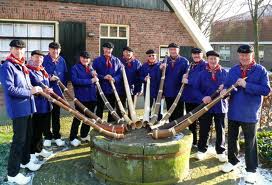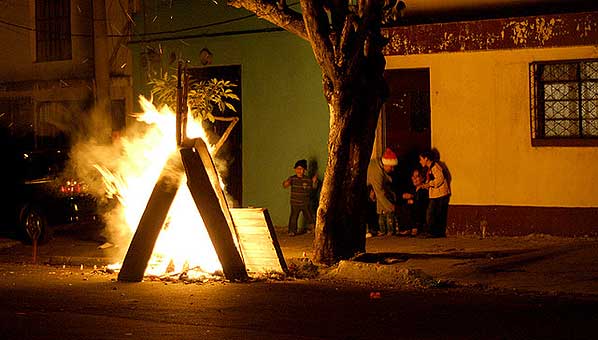
Advent does not begin with a fixed date because the period can begin anywhere from November 27 to December 3. Consequently there is no one common custom to kick off the season. In Honduras there is a masked dancer called the Warini or Christmas Herald who goes door to door accompanied by singers and drummers to announce the season. And in Twente in Holland long wooden horns, carved out of saplings are sounded over a well to produce a deep foghorn like tone. In Oldenzaal trumpeters blow in Advent from the four corners of a medieval tower. Moravian churches will make the occasion by the erection of their famous multi-pointed stars.
Almost everywhere there is the compulsion to clean the house. In fifteenth century Florence a religious revival led by the monk Savonarola resulted in the famous “Bonfire of the Vanities”, a public burning of luxuries that were deemed to keep the minds of believers off of God and salvation. A similar spectacle occurs every year at the beginning of the Christmas season in Guatemala. On December 7 (also the day to celebrate the Immaculate Conception of the Virgin Mary) Guatemalans haul out of their homes the things they think they don’t need anymore and set them on fire in a ceremony called “The Burning of the Evil” — with their homes thus purged of unnecessary encumbrances their souls can prepare for the coming of Christmas. In Trinidad and Tobago the house must be given a thorough cleaning and decorated; a portion of the Christmas budget always goes to buying something new for the house at this time of year. New curtains are hung, windows are washed, furniture is recovered, long-delayed repairs are made, a new piece of linoleum is laid and the paint brush is busy. In northern Europe Advent is also a time to tend to the graves of the family dead as well as sprucing up the house. In Moravian settlements in Labrador a common expression or question heard in December is “Is you ready yet?” This means basically, “Do you have your house thoroughly cleaned?”
